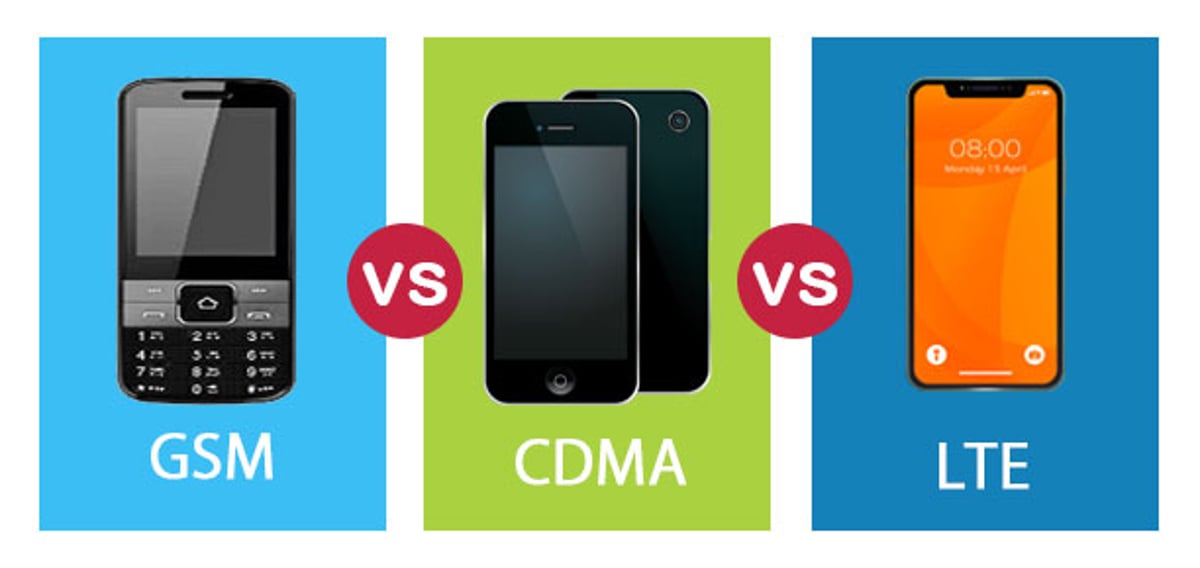5G, 4G & 3G Standards: LTE, GSM CDMA, ISM, WCDMA, HSPA
5G - 4G - 3G Standards:

LTE (4G), GSM (3G & 2G), CDMA (3G & 2G), 5G and ISM. The fundamental differences between these four modern technologies is the way they transmit and receive information.
LTE (Long Term Evolution) is a 4G communication standard designed to be 10x faster than standard 3G. the technology provides IP-Based communication of voice and multimedia and streaming at between 100 Mbit per sec and 1 Gbit per second. LTE has an algorithm that is able to send large chunks of data via IP. This approach streamlines the traffic and reduces latency.
GSM is an abbreviation for Global System for Mobile Communication. GSM is a digital cellular technology used to transmit data and voice communication at a frequency range of 850MHz to 1900MHz. GSM technology uses a Time Division Multiple Access (TDMA) technique to transmit data. The GSM system converts the data into a digital signal and sends it through two different time stamped channels at a rate between 64 kbps and 120 kbps.
CDMA stands for Code Division Multiple Access. CDMA uses a multiple access mode of communication. This is where several transmissions are made over the same channel simultaneously. Using a speed spectrum, each transmission is assigned a unique code that corresponds to the source and destination of the signal.
ISM: Industrial, scientific and medical radio bands reserved for medical, scientific and industrial use and not intended for telecommunication. Originally this band of radio frequencies was intended for use in industrial, scientific and medical ISM machines that operate at this range in order not to interfere with the wider.
5G Cellular Technology
5G promises to boost cellular data transfer to speeds rivaling the fastest fiber optic networks. In general, 5G offers better broadband bandwidth, capacity and reliability to levels far beyond 4G.
5G which stands for 5th-generation wireless systems consists of improved 5th generation cellular networks deployed in 2018 and beyond. The networks use 4G or new specified 5G frequency bands to operate.
5G Frequency Bands vs. 4G LTE
The primary technologies behind 5G include 26, 28, 38 & 60GHz millimeter wave bands. These 5G frequency bands offer speeds as high as 20Gbps. Massive Multiple-Input-Multiple-Output (MIMO) 64-256 antennas offer performance speeds that are ten times better than the current 4G networks. Low-band and mid-band 5G use frequencies ranging from 600MHz – 6GHz (especially 3.5 – 4.2 GHz).
5G wireless frequency bands in the USA that are available and ready for use include; 3100 – 3550 MHz and 3700 – 4200 MHz. In Asia, they include; 3300 – 3600 MHz, 4400 – 4500 MHz and 4800 – 4990 MHz in China, 3600 – 4200 MHz and 4400 – 4900 MHz in Japan and 3400 – 3700 MHz in Korea. 3400 – 3800 MHz is available in Europe. America has already begun pre-commercial deployment for very high 5G MMW frequency bands 27.5 – 28.35GHz & 37 – 40GHz.
Posted by George Hardesty on 22nd Nov 2023

























